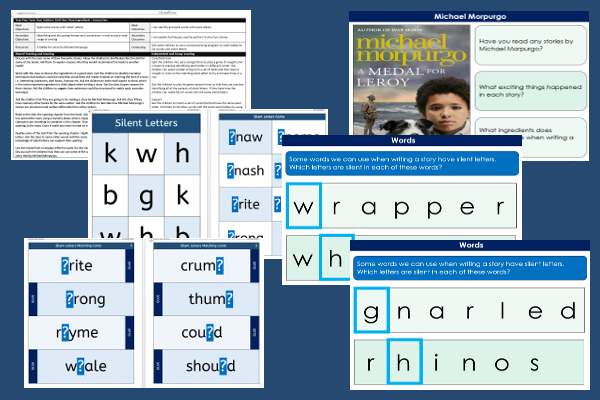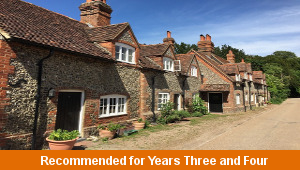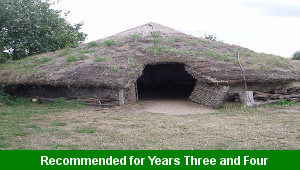Lesson One – Matching Silent Letters

This English teaching pack for Key Stage Two gets the children to identify and spell different words that can be spelt with a range of silent letters to utilise when playing a matching word game.
The class can identify and record how to use words with silent letters to describe characters that might feature in different types of stories such as adventure or fantasy tales.
Download this teaching pack including a lesson plan, classroom activities and an interactive presentation to identify and spell different words that can be spelt with a range of silent letters to utilise when playing a matching word game
Activities in this teaching pack include a worksheet to play a matching game to identify and spell different words with a range of silent letters and a set of cards to select and group different words with the same matching silent letters to use when writing sentences from different story genres.
The interactive presentation gets the children to explore how to spell different words with a range of silent letters to utilise when playing a matching game.
This lesson is part of an English scheme of work to get the children to explore narrative structures and use of vocabulary by an established children’s writer, identify and spell words with silent letters and convert sentences between the third and first person. There are teaching activities for shared learning, differentiated worksheets to support independent learning and interactive presentations to introduce concepts and key skills.
-

Cities, Towns and Villages
Research and present the history of a range of different buildings and people that are part of the local community using a school exhibition
-

Recycling
Research and present some of the benefits and disadvantages that can be produced when recycling different materials at home and in school
-

Viking Pots
Develop and refine a range of different art and design techniques when working with clay to make pots that represent Viking culture and traditions
-

Bronze Age
Research and illustrate how life in Britain developed and changed during the Bronze Age including the growth of communities and trade
